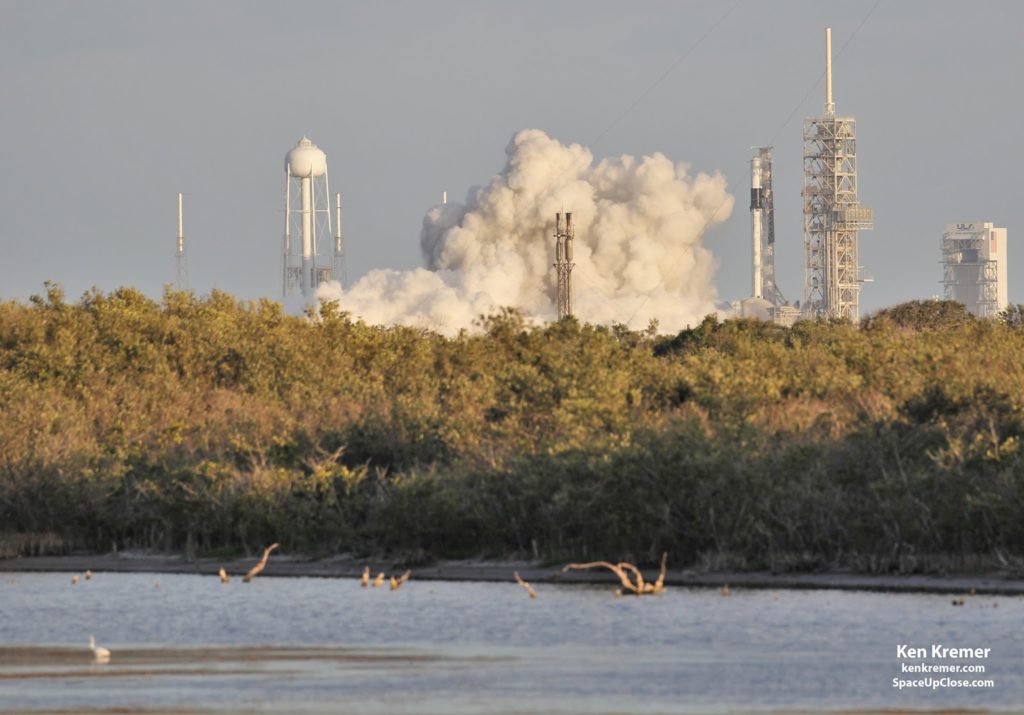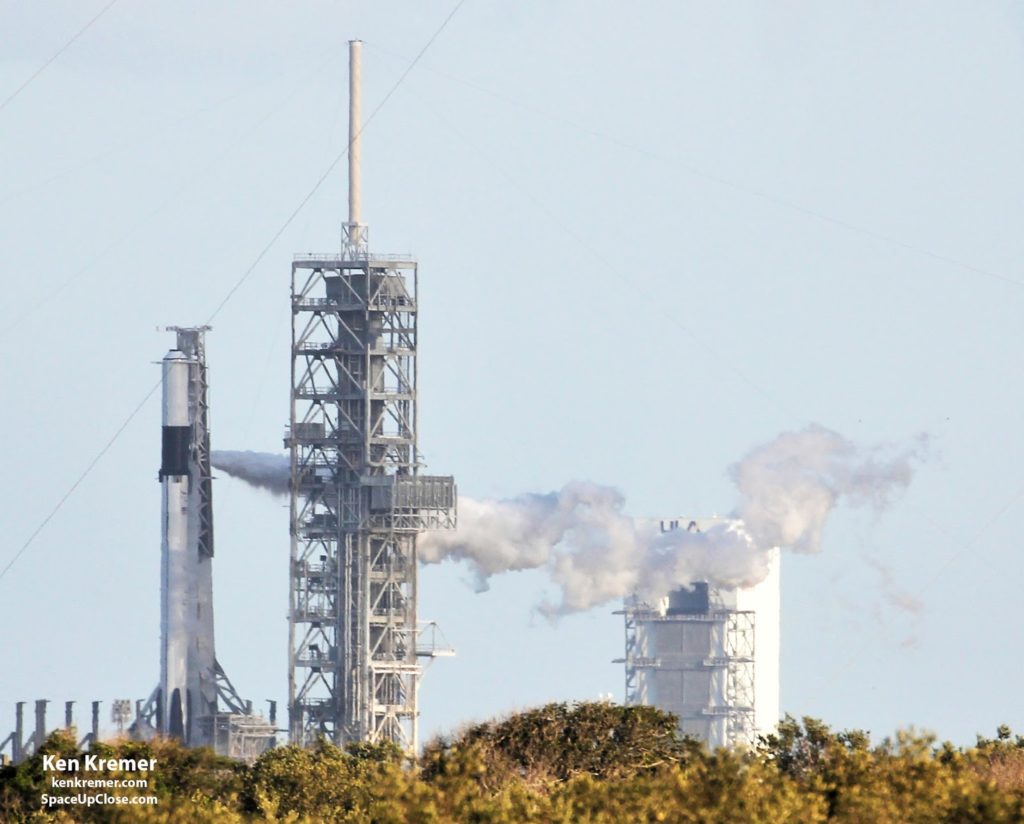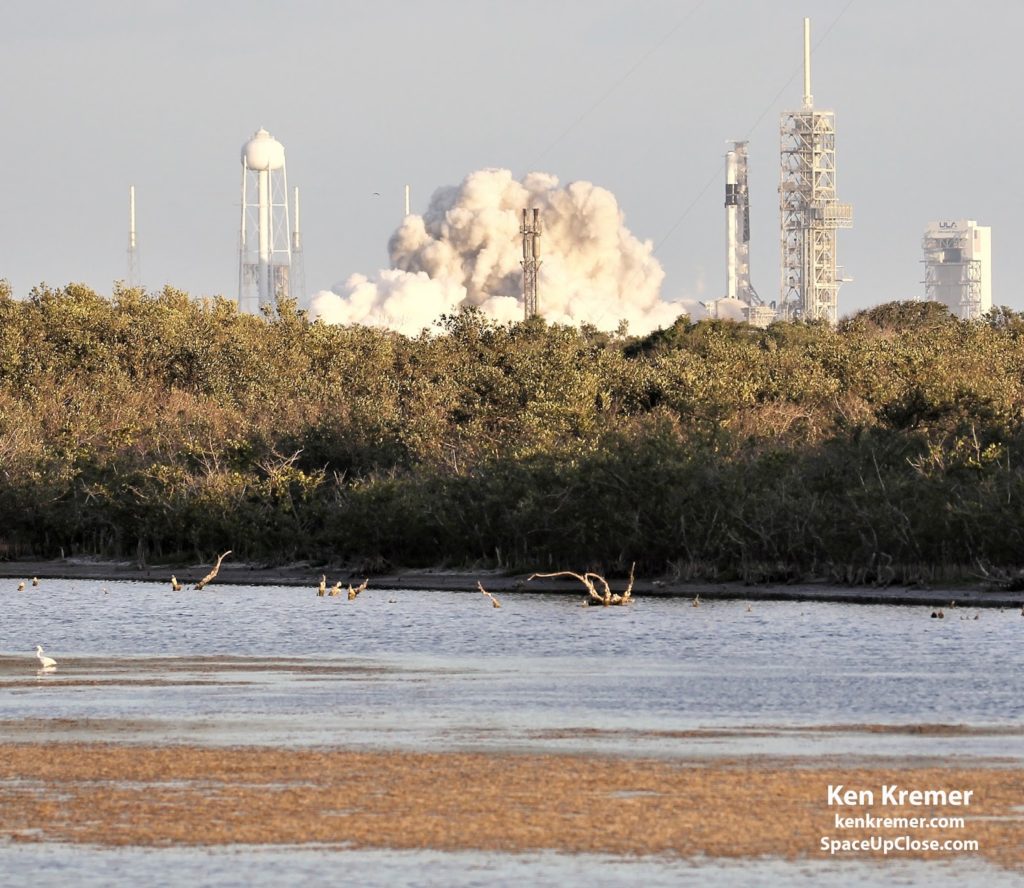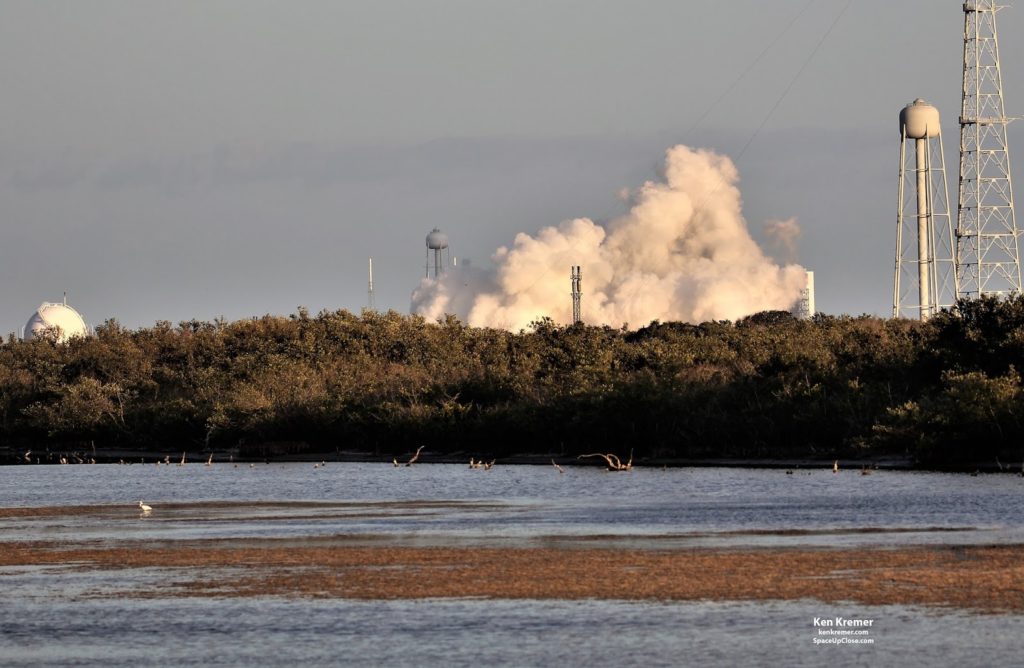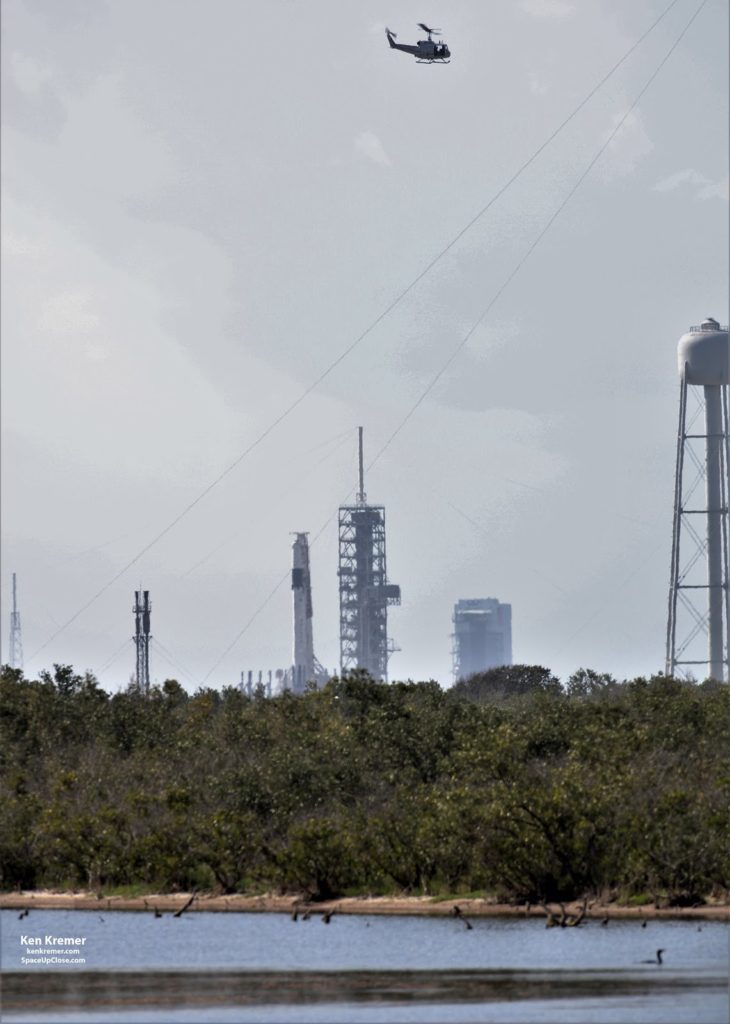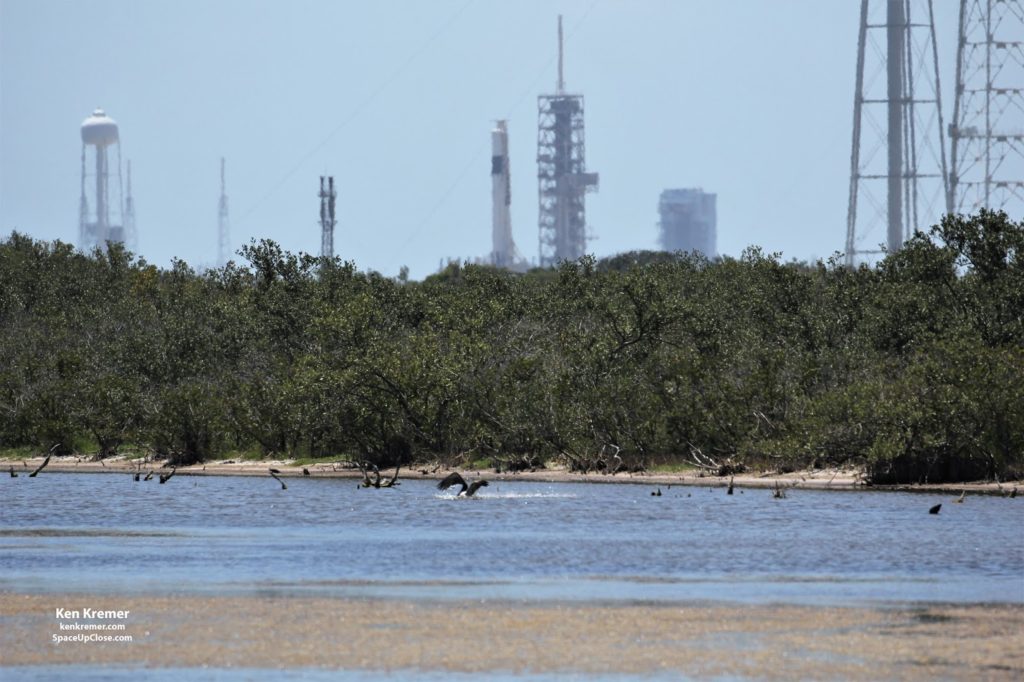Ken Kremer
— SpaceUpClose.com — 4 May 2018
NATIONAL SEASHORE, FL – After working
all afternoon to ready their newest rocket SpaceX engineers finally completed the
critical hold down static hot fire test of the first upgraded Block 5 version
of their Falcon 9 booster standing vertical at historic pad 39A at NASA’s Kennedy
Space Center (KSC) at sunset Friday evening, May 4, near the end of the eight
hour long testing window – and under beautiful skies on the Florida Space Coast.
test is one of the final hurdles required to clear the path to launch – in this
case for the Bangabandhu-1 satellite, the first geostationary
communications satellite for the nation of Bangladesh.
This engine test and
subsequent launch is also of extremely great importance and significance to
NASA because the Block 5 Falcon 9 will be used by SpaceX to launch American astronauts
back to space and the International Space Station (ISS) from American soil and thereby
end our 100% dependence on the Russian Soyuz for seats to orbit and back.
Thus a lot is riding
on the upgraded Falcon 9 – which is also the final upgrade for this rocket, according to SpaceX CEO Elon Musk and VP
Hans Koenigsmann. The upgrades increase the reliability and reusability
of the Falcon 9 including faster turnaround with less maintenance and fewer refurbishments.
Although blastoff of the
Bangabandhu-1 comsat had been slated for May 4 and then May 7, it is now
expected to be delayed a few days to perhaps late next week since the test fire
was also delayed multiple times to give the SpaceX team sufficient time to
ensure the rocket was truly ready.
engine test on the fully fueled SpaceX Falcon 9 booster took place at approximately
7:25 p.m. EDT with the sudden ignition of all nine Merlin 1D engines bolted
onto the base of the first stage for about 3 seconds while raised erect atop
Launch Complex 39A at KSC.
hand to witness the key event from an excellent vantage point only few miles
away – out on the causeway leading out to Playalinda Beach.
completely enveloped the rocket within seconds. But then completely dissipated within
2 minutes and revealed the rocket was still standing and apparently in great
condition.
gallery of photos and video of the hold down static fire engine test. Check back as the gallery grows.
the second stage became apparent at about T minus 20 minutes and T Minus 5 minutes
– a clear indication that the test firing could be imminent. Scrubs are of
course always possible. And for a time
it seemed like it would be postponed again.
test SpaceX confirmed via twitter the engine test was completed and that they
will take a few more days to examine the data and confirm all is well.
fire test complete ahead of next week’s launch of Bangladesh’s first geostationary communications satellite,” SpaceX
tweeted.
review will take a few days—will confirm a target launch date once that review
is complete.”
Unofficially a tentative
launch target date of May 12 is mentioned by Bangladeshi news media.
Rocket Test Fire on 39A. Credit: Jeff Seibert
is routinely run by SpaceX to check the health of the rocket and all its
systems and confirm its readiness for launch.
rolled out to the pad late Thursday afternoon, May 3. It was only raised erect
about 5 a.m. Friday morning, May 4.
engine ignition lasted about 3 seconds – which is about normal for these type
tests. Although occasionally the tests run longer varying between 7 or 8
seconds or more to as much as 12 seconds or more.
on pad test of the newly upgraded Block 5 Falcon 9 extra precautions were taken
by team but the length and timing of the test was not known since SpaceX doesn’t
not publicly reveal these details ahead of time.
fire test, the rocket’s first and second stages are fueled with liquid oxygen
and RP-1 propellants just like an actual launch, and a simulated countdown is
carried out to the point of a brief engine ignition.
ignition the rocket remains held down on the pad by bolts and does not lift
off.
is run minus the payload with the second stage capped on top.
will now be rolled back into the horizontal integration facility processing hanger
located just outside at the pad 39A perimeter fence.
fairing will then be bolted on top and the entire 23 story tall rocket will be
rolled back out to pad 39A.
ULA, Boeing, Lockheed Martin, Orbital ATK and more space and mission
reports direct from the Kennedy Space Center, Cape Canaveral Air Force Station,
Florida and Wallops Flight Facility, Virginia.
Earth and Planetary science and human spaceflight news: www.kenkremer.com –www.spaceupclose.com –
twitter @ken_kremer – ken
at kenkremer.com


